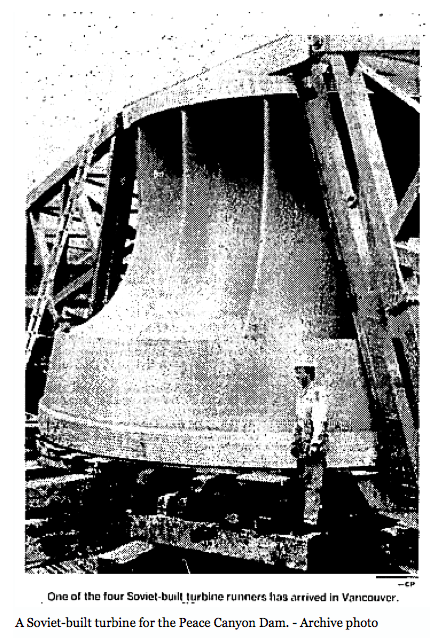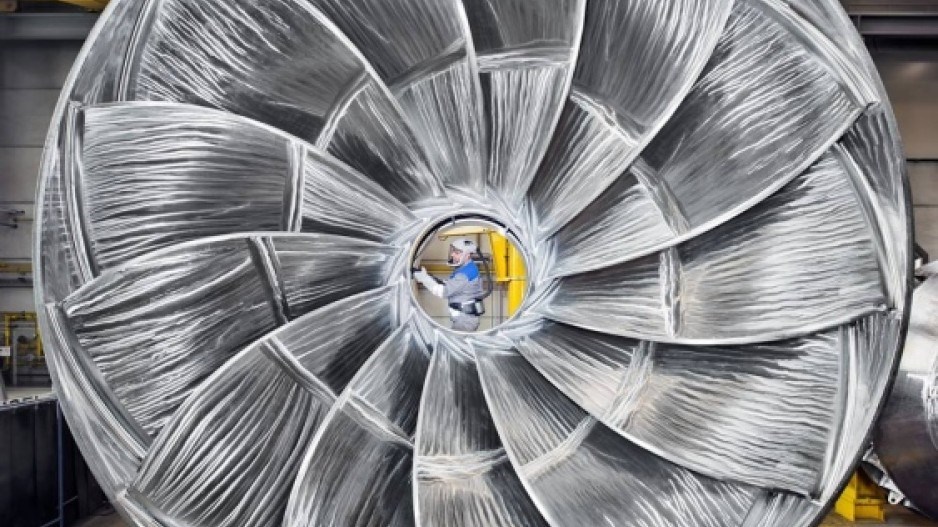Premier Christy Clark has announced the purchase of six 183-megawatt turbines for the Site C dam—one of a handful of remaining contracts on the mega-project left to be tendered.
The turbines will be supplied by Germany-based Voith Hydro, one of the world's largest manufacturers of hydroelectric generators. The contract is valued at $470 million, and includes the design and installation of the turbines and generating stations.
She said the generating station would not fit in the dome of the B.C. Legislature, where the announcement was held.
"The design and manufacturing of these units is highly specialized work," BC Hydro CEO Jessica McDonald said. "They have to be custom-designed for each hydroelectric facility."
Voith Canada is headquartered in Montreal. The company previously completed upgrades to the G.M. Shrum Generating station at the W.A.C. Bennett Dam.
Voith CEO Bill Malus said 400 person-years of employment will come from the turbine installation, including work for as many as 150 union and non-union millwrights, electricians and boilermakers. He said the company would have local training opportunities in the Peace Region, adding Voith would rely on local subcontractors as much as possible.
The announcement was attended by a number of union officials, including boilermakers and the International Brotherhood of Electrical Workers.
'Epic' moving jobs of years past
The last complete set of turbines for a Peace River dam were built at a metal works in the Soviet Union and shipped to B.C. aboard a Yugoslav freighter.
Forty years later, both of those countries have been wiped from the map.
With the exception of a partial replacement of the W.A.C. Bennett Dam's turbines completed last year, much of the generating capacity on the Peace River is original hardware.

(Image: A Soviet-built turbine for the Peace Canyon Dam)
Transporting the Soviet-built turbines to the Peace Canyon dam required an "epic" moving job, according to a 1978 report in the Globe and Mail.
The first of four 220-ton turbines arrived in Vancouver in July of that year from the Leningrad Metal Works. It was the beginning of a 1,600-kilometre moving job—including two mountain ranges—expected to cost $4 million at the time.
The eight metre-wide waterwheels could not be transported by highway or rail, and made most of the journey by barge. Apex Movers of Burnaby was hired to haul the turbines to the dam site.
From Vancouver, the turbines were loaded onto a 45-metre trailer parked on top of an ocean barge, which hauled its cargo to the Gardner Canal south of Kitimat. There, the convoy began the first leg of its overland journey, carrying the turbine to an arm of the Nechako Reservoir and loading it onto a portable barge.
Eventually, the turbine made it to the Bennett dam by way of Williston Lake. The last few miles to Site One, as Peace Canyon was called, were traversed on logging roads straightened and widened for the project.
Check out BIV's latest podcast:




